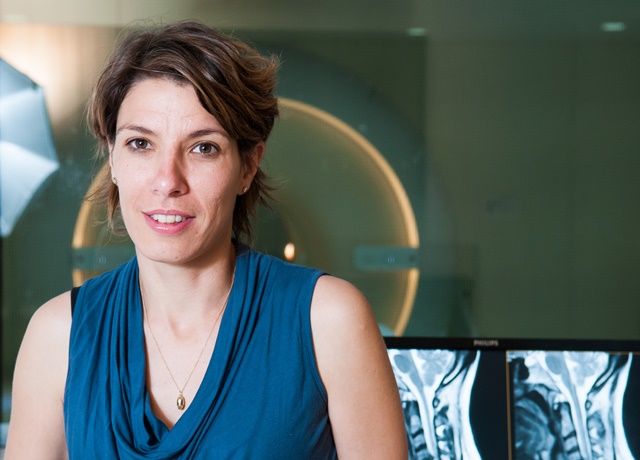
A new study entitled "Visual expertise for horses in a case of congenital prosopagnosia" and recently published in Neuropsychologia journal, demonstrates the domain specificity of face perception over other objects of expertise. This research is aimed at examining a long standing debate in the face literature: Whether faces comprise a distinct visual category which is processed by specialized cognitive and neural mechanisms, or whether faces represent an extreme case of visual expertise, due to our life long experience with them. This latter approach implies that, provided enough training, other visual categories would be processed in a similar fashion.
The study was conducted by a group of researchers at BGU, supervised by Prof. Galia Avidan (pictured above) and her colleagues: Nilly Weiss, a Ph.D. student at the Department of Psychology, and Elite Mardo, a Ph.D. student at the Department of Psychology in the University of Haifa, under joint supervision by Prof. Galia Avidan and Dr. Bat-Sheva Hadad.
The distinctive skill of face perception has been often attributed to holistic processing mechanism. Namely, recognizing a face at a single glance, by its gestalt, rather than relying on each feature of the face separately (e.g. eyes, nose, mouth). The main question of this study was whether individuals who acquired expertise for horses during their long period of work with horses, use holistic processing for horse perception as well as for face perception.
The motivation for the study emerged as a young student with congenital prosopagnosia (CP) approached the researchers at BGU lab. CP refers to a life-long impairment in face processing despite normal sensory vision and normal intelligence in the absence of any obvious brain damage. This woman has worked in a horse farm since she was 7 years old and hence acquired superior recognition skills for horses. These circumstances, in which face perception is impaired while visual expertise naturally emerged in a different visual domain, provide us with a unique opportunity to investigate the neuro-cognitive mechanisms mediating visual expertise.
Fig. 4. Interest areas delineated for one example of a face (4.A) and a horse (4.B) stimulus
In the present study we showed that this individual, that similarly to other CP individuals do not use holistic processing for face perception, exhibits dissociated behavioral strategies for horse processing, that is not holistic. It was also shown that other horse experts, despite using holistic processing for faces, did not use this mechanism for horses. In our current imaging experiments we found that she exhibits a distinct pattern of fMRI brain activation such that her core face-selective regions in the right hemisphere showed reduced selectivity for faces compared to horses relative to that of matched controls (either horse experts or novices). These results suggest that visual expertise can be acquired independently from the mechanisms mediating face recognition. However, in the presence of a face perception deficit, expertise may be mediated through the neural system involved in face processing.
